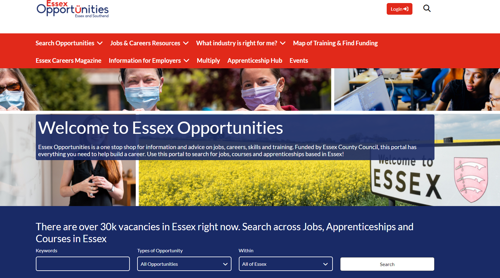How data standards can facilitate collaboration and innovation
Our CEO, Chris Gledhill, recently attended the second public sector Scotland Data Futures Forum roundtable discussion at the National Museum of Scotland in Edinburgh.
In light of this conversation, Chris reflects on the topic of data standards and open data as a means of facilitating collaboration and innovation.
What are the benefits of data standards?
One of the biggest challenges that the public sector faces around data is that there are huge overlaps in the kinds of data required to deliver services across the different parts of government. This affects departments right across the board including health, criminal justice, education and more. However, it can be extremely difficult to share this data, partly due to data protection in some cases, as well as the fact that each department has different systems and standards.
Therefore, the more we can ensure that systems are built around open data standards, the better. There needs to be a common understanding of how to make information systems and the data within them comparable. This in turn will make it easier to create more seamless and effective dataflows between organisations or to handle cases between systems within the same organisation.
In addition, data standards are universally seen as a great way to reduce product lock-in and enable data collaboration across different agencies, which in turn provides a more cost-effective service.
For example, if you can rely on the fact that a name and address are going to be consistently stored and verified, then you can rely on the accuracy of the associated data even if it is stored in two different systems. When managing vast amounts of data, you need to have the confidence in that information and know you can process it without having to introduce unnecessary bureaucracy.

In the healthcare system, using an NHS number as a unique identifier reduces the need for your name and address to be inputted correctly each time. This small identifying tag would be unique to you and used consistently across the different healthcare services to identify your records even if you got married or changed address. However, these things need to be agreed upon, then universally and consistently applied across the board. There is no point in your GP using your NHS number and then your local hospital creating a different record based solely on your name and address. Plus, when someone procures a system, those same standards must be applied and integrated to enable continuity and longevity.
What are the costs of ineffective data management?
Ineffective data management can lead to mistakes, which have massive ramifications, especially in high stakes areas of activity. Implications could include delays, sanctions and overall, the inability to innovate and deliver more joined-up services.
Another big drag on progress is data silos where data is isolated within specific data stores or systems – this is particularly prevalent in the public sector. It inhibits data sharing and hampers a holistic view of public services. It also creates a very poor user experience for the end customer – how many times have you had to submit the same basic information to multiple local or central government departments or agencies?
In my opinion, the failure to recognise that data is a strategic asset that transcends the scope or lifespan of individual systems, is one of the primary drags on achieving the productivity and service potential of digital transformation.
Can data standards help organisations deliver more for less?
The simple answer to this question is yes! Having common data standards massively simplifies the process of sharing data with partners, customers or other stakeholders which helps to drive cost efficiencies. It helps reduce both the costs and the risks associated with data migration, transformation and reconciliation. Having good data standards can help organisations deliver more for less by allowing them to move data more seamlessly between systems in an automated way.
When data is manually transferred across systems, re-keying happens. Consequently, human errors are made. Every time a typing error occurs, there is a measurable cost. However, if it’s automated, this clerical cost completely falls away.

This is especially important in areas of public spending and public services such as health and criminal justice. Returning to our health example, our health records are typically spread across multiple systems in the primary care system, mental health, hospital systems etc. The information across all those systems is duplicated and every time that information moves from one system to another – such as from your GP to your hospital – errors can be made. And those errors can impact your wait times, the conversations you have with your healthcare provider, and increase low value time spent by those providers that could be better used elsewhere.
Having well-established data standards provides an untapped opportunity to reduce costs and delays, whilst providing more innovative and joined-up services.
How do data standards encourage and facilitate collaboration?
Data standards are the key to collaboration. To collaborate effectively, you need to be able to receive information and be confident that it is correct, consistent and in the format you need to avoid delays.
A good analogy is to think of it like railways. To ensure all trains and carriages can travel effectively, people standardise the gauges of railways because it means that rolling stock can operate on different railways seamlessly. It is the same for data standards. You need to be able to rely on the fact that details are going to be stored consistently across different systems. That way, the need to worry about re-entering or re-checking it is avoided, and you can automatically transfer data between the two systems, like a train between different railroads.
Within any area of engineering, when a standard becomes widely accepted and used, they become invisible to the day-to-day person. If each engineer had to start checking the voltage on everything before you plugged it in, you would incur extra effort. Instead, the individual simply benefits from the convenience that the standard works and collaboration between organisations becomes effortless.
What are the benefits of open data? And how does PDMS use open data to increase collaboration?
There are many benefits to having access to open data, including the ability for business to innovate with confidence knowing that any new and valuable solutions can be reliably and cost effectively implemented. PDMS’ SignedUp Skills platform is a great example of this. SignedUp Skills is an employment and skills platform that helps local authorities empower their residents to understand the job market and find Labour Market Information (LMI) in their local area.
To build these platforms, we consume UK government data regarding apprenticeships, training courses, job vacancies, salaries and any other information relevant to people thinking about their career. This information comes from very disparate sources, but with our SignedUp Skills platforms, we consolidate this information. We then regionalise and localise the data to the relevant area to curate content that meets the needs and demands of the local labour market.
SignedUp Skills considers all the different participants within a labour market and consolidates information to support them. We recognised that there are all these activities going on in the labour market which are not very joined up and located in all these different datasets. We then bring it all into one place and start to innovate to create services to get that information to people who need it.

We don’t pay for this data, but we do create a commercial proposition out of it at our own cost. In this instance, we have added value by utilising this open data to create a resource for a public good. This is just one example of how you can innovate with open data to create something that provides genuine benefits to the wider community.
What are the similarities and differences between UK and Scottish governments views on data standards?
For both UK and Scottish public sector organisations and policy makers, most of the fundamental challenges when it comes to data are exactly the same. The reasons why they want to implement standards are consistent. I think everybody sees the real benefit to data standards in terms of not only cost, but also the fact that standards can lead to more efficient processes and greater collaboration across organisations.
Of course, there are differences in scale and political differences in terms of the complexity of getting organisations to easily collaborate. In a smaller jurisdiction, it is easier to get everyone involved into a room. In a larger jurisdiction like the UK, it may be harder to get decisions made, but on the other hand, there are more resources available to implement such standards.
Ultimately, everybody is trying to achieve the same thing. Everyone wants to do a good job, make the best use of the resources they’ve got, and overcome rising budget constraints. No matter their location or scale, everyone has the same goal and the same hurdles to reach that goal. So, in the end, the solutions that people end up with will eventually be quite similar.
The Scottish government has recently published the findings of an independent review on unlocking the value of data which outlines a policy statement, guiding principles and recommendation on private sector access to public sector personal data in Scotland. Its ultimate ambition is that Scotland will benefit from becoming a globally leading nation in ethical, appropriate and fruitful data practices.
If you were trying to convince a leadership team to prioritise a data strategy, what would be your pitch?
The chances are that a lack of reliable and timely information or a lack of efficient integration between systems will be right at the heart of the problems they are dealing with. In my experience, you don’t need to talk to them about data. It’s about their purpose and what they do and don’t do well. The second stage is then finding opportunities to use the data assets they have to improve their business performance.
What are the first steps that organisations can take towards adopting data standards?
The first step is getting organisations to effectively agree to adopt shared standards. Firstly, organisations can say that they are going to standardise, then create organisations whose job it is to manage those standards and ensure we all agree to them.
Within the EU, for example, there are a huge number of different standards. At one point, lots of organisations within the EU had different, independent standards for various things. However, the EU departments gradually agreed to pool things over time. This is a prime example of where standards can reduce frictions within a marketplace as it can create a bigger market for those who have built things to meet those standards. So, there is a gradual increase in those benefits, but the starting point still has to be an imperative or message from leadership to implement these standards.
However, in some circumstances, standards can become a barrier to innovation. For example, if you are not given enough time to meet the standards or it doesn’t cater for new techniques and technical developments, it can prevent the creation of innovative new products. Therefore, it’s important that standards can evolve and respond to changes in the marketplace or in technology.
There are some areas that are relatively easy to standardise and others which require a more flexible approach. However, the basic principles of good governance apply here, and we would always recommend a principle of “comply or explain” in this regard.
Another aspect to consider is that there are some who have a vested interest in breaking standards or having their own de facto standards. With data standards specifically, when people build software, they may then try to protect their commercial interests through the proprietary nature of things like data structures. They may be opaque about how to make that information compatible with other systems because they want to make it more difficult for people to migrate off their system onto a competing product. Therefore, some organisations may have commercial vested interests in not complying with data standards at all.
Read more about the recent public sector Scotland Data Futures Forum roundtable discussion here.
